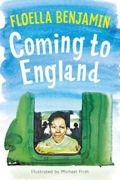
Anyone who follows Emerald on her social media accounts only sees a perfect life-her loving, wealthy family, tight-knit circle of friends, and devoted internet following. But the truth hides behind the scenes of her perfectly framed, filtered photos. Emerald’s family is far from happy, and when she finds her mom unconscious on the bathroom floor, she can no longer keep it a secret.









